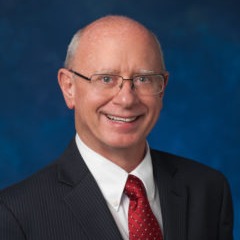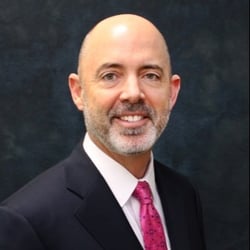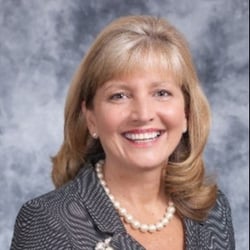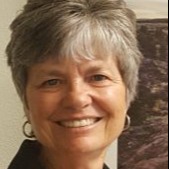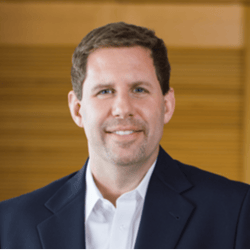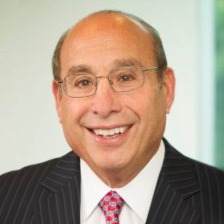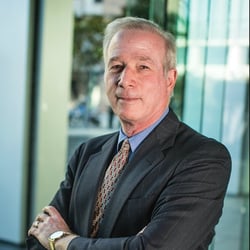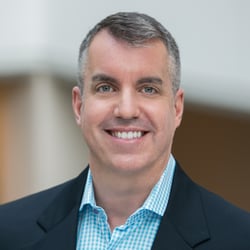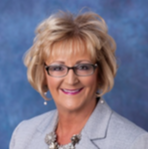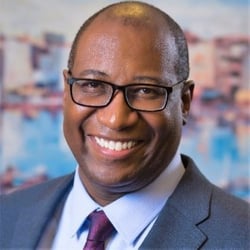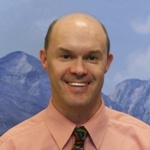 This month, we are pleased to present our Q&A with Matthew Guy, a health ecosystem convener. Matt, President and Owner of Accelerated Transformation Associates, specializes in clinical, community, and population health transformation. Through his work with ReThink Health, he provides great insights on his work to convene groups in systemic changes to positively impact the health of the populations within Sonoma Country, CA; Bend, OR; and Albequerque, NM.
This month, we are pleased to present our Q&A with Matthew Guy, a health ecosystem convener. Matt, President and Owner of Accelerated Transformation Associates, specializes in clinical, community, and population health transformation. Through his work with ReThink Health, he provides great insights on his work to convene groups in systemic changes to positively impact the health of the populations within Sonoma Country, CA; Bend, OR; and Albequerque, NM.
Key take-away points from our conversation with Matt include:
- Starting from an understanding of the other side’s perspective, priorities, and interests helps prevent obstacles in the way of collaboration
- In order to drive collaborative solutions, organizations require leaders who are eager to learn, willing to take action, and can find common ground
- A culture of collaboration must be modeled from the top to enlist leaders who are willing and able to collaborate across boundaries
TLD Group: Can you share an example from your experience leading cross-sector collaboration?
Guy: In my role at ReThink Health, I act as a facilitator of organizations who want to change health outcomes from a systemic perspective rather than from their individual silo, or even their industry silo. A good example comes from some of the work we’re doing in New Mexico. Presbyterian Health System (the largest health system in Albuquerque) and University of New Mexico (UNM) Health System were the original actors that we interviewed and they were willing to come to the table to talk. Presbyterian Health System is a combined payer and provider, but were very interested in involving a large payer outside of Presbyterian. We were fortunate to have some conversations with New Mexico Health Connections, New Mexico’s health insurance co-op. When we approached the CEO, Martin Hickey, he was very interested in our work and how it would impact the work of the co-op. We were able to enlist buy-in from him for this collaboration because he believed in the need for integration and connection with other parts of the healthcare system, and not just being a payer but even getting involved in delivery as well. Because he believed in the importance of change in the health ecosystem in a broader sense and different actors working together, we brought these organizations together to discuss collaboration solutions.
TLD Group: What is the process you use to convene groups with competing priorities?
Guy: One thing that’s very important to this kind of work is going into a community and having them explain to you what’s going on. When I work with communities, I use a concept that I call a “road game.” When we’re going to their house and talking to their people about what’s going on with them, we can’t just come in and say, “We’re going to solve the problem for you.” Yes, we’ve got the tools, and we’ve got our own framework and value proposition with stewardship, strategy, and financing. But that framework is going to fit differently within different communities, so we can’t just approach it from our own perspective. If we come in with a solution, and their organization doesn’t fit in with this “prescribed” solution, they’re not going to participate. Instead, we need to understand in what way their organization has an impact on the system and how what we have can benefit their organization. We need to go in and hear what’s bothering those leaders, what are their pain points, and what do they see as the biggest issues. We also ask them a series of questions and have them map out: who are the actors, what parts of the community are involved, are all necessary players involved? Also, thinking more broadly from the healthcare industry perspective, asking who’s at the table? Do you have multiple systems – healthcare systems, payer systems, delivery systems, ambulatory, behavioral health, public health, etc.? Who are the most influential people? It might not necessarily be the hospital CEO that’s most influential. It could be the CNO, the CIO, one of the family physicians, or whoever else. Asking these questions helps them think about their system and map it out, so we can see who’s involved, where are the gaps, and where are the opportunities to not only enhance what they already have in place but to also fill in some of those gaps as well.
TLD Group: How do you think leaders can encourage collaboration, and what do you think constrains it?
Guy: What constrains collaboration is going in with a heavy-handed dictatorship style and demanding, “You will cooperate.” That is the absolute worst thing you could do. That unfortunately occurs sometimes by necessity, either by regulation or law. Going back to the idea of the “road game” – demanding cooperation doesn’t work nearly as well as having the groups come together and gain an understanding of each other’s individual or organizational points of view, needs, desires, hopes, and aspirations. When you start from that perspective, you discover what the other side’s needs are and how you can help them achieve that in the broader context of improving the whole.
TLD Group: What are the characteristics you would want in leaders sitting around the table?
Guy: Regardless of the organizational position, the leaders that seem to do the best are ones with an eagerness to learn, the ability to cast a vision, the ability to work through “no” to find a “yes”, who can find common ground, and are willing to take action. The problem is, it takes time to figure out who those people are. Those characteristics are not necessarily easy to see on the surface. We find the best leaders are those “front-line” employees interacting on a day-to-day basis with patients – the people on the ground. I think to truly impact systemic changes, it’s important to find those people who have the wherewithal to move the needle, wherever they may sit within the organization.
TLD Group: What is the difference between leaders who can persevere and push through set-backs that inevitably occur during the process of collaboration, versus those who decide to give up and go back to the “traditional” way of doing things?
Guy: It’s all about creating and developing a learning organization, a learning community, or a learning leader – people who can stop and consider what can be learned from the experience. You need leaders who treat learning as part of their daily activities, who don’t just treat the work as something that gets put on the shelf, never to be looked at again. Learning leaders take the time to consider what worked, what didn’t work, and how they could take what they’ve learned from the experience and try something different. Developing leaders with this capacity should be on the forefront of our attention, but it’s not something that’s going to change overnight. It takes time.
TLD Group: How would you suggest organizations develop collaborative leaders?
Guy: First and foremost, demonstrate it. The culture of collaboration needs to be demonstrated from the top so it can cascade down to the lower levels of the organization. Secondly, bring people in from other organizations, or even other industries, and have them talk about what they’re doing to create links between what the respective organizations are doing. Third, show how the organization fits into the broader context of the health ecosystem and the impact the organization has on the system. The problem most leaders have is, they try to force their ideals down the throats of whoever they are trying to get to cooperate. Rather than trying to transform leaders’ entire view about things are done in the organization, just try to get them to understand the organization’s role in the larger scheme of the health ecosystem and how their work fits into this broader context.
View our other HELM Q&A Interviews:

 This month, we are pleased to present our Q&A with Matthew Guy, a health ecosystem convener. Matt, President and Owner of Accelerated Transformation Associates, specializes in clinical, community, and population health transformation. Through his work with ReThink Health, he provides great insights on his work to convene groups in systemic changes to positively impact the health of the populations within Sonoma Country, CA; Bend, OR; and Albequerque, NM.
This month, we are pleased to present our Q&A with Matthew Guy, a health ecosystem convener. Matt, President and Owner of Accelerated Transformation Associates, specializes in clinical, community, and population health transformation. Through his work with ReThink Health, he provides great insights on his work to convene groups in systemic changes to positively impact the health of the populations within Sonoma Country, CA; Bend, OR; and Albequerque, NM.

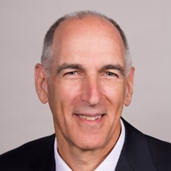

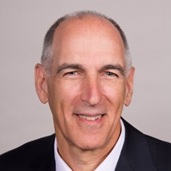 Andrew Baskin, MD, is Aetna’s Vice President, National MedicalDirector for Quality and Clinical Policy and served as the Interim Chief Medical Officer (in 2014). He works on initiatives to measure and improve quality of care, the provision of evidence based care, quality measurement implementation and public reporting, health plan accreditation, and the establishment of performance based networks. Additionally, Andy partners with others to help establish programs which create incentives for more effective and efficient care, influence and assure compliance with healthcare reform regulations, develop products to improve affordability and quality of care, and promote payment reform.
Andrew Baskin, MD, is Aetna’s Vice President, National MedicalDirector for Quality and Clinical Policy and served as the Interim Chief Medical Officer (in 2014). He works on initiatives to measure and improve quality of care, the provision of evidence based care, quality measurement implementation and public reporting, health plan accreditation, and the establishment of performance based networks. Additionally, Andy partners with others to help establish programs which create incentives for more effective and efficient care, influence and assure compliance with healthcare reform regulations, develop products to improve affordability and quality of care, and promote payment reform. Mohamed Diab, MD, Vice President of Provider Transformation leads population health management at Aetna. His focus is on providers as they transform their care delivery to achieve the “Triple Aim” by improving quality of care and reducing unnecessary cost. Mohamed has more than 25 years of experience as a provider as well as an executive in the payer and consulting industries. He has a background in medical management, pharmacy benefit management, clinical informatics and cost management programs.
Mohamed Diab, MD, Vice President of Provider Transformation leads population health management at Aetna. His focus is on providers as they transform their care delivery to achieve the “Triple Aim” by improving quality of care and reducing unnecessary cost. Mohamed has more than 25 years of experience as a provider as well as an executive in the payer and consulting industries. He has a background in medical management, pharmacy benefit management, clinical informatics and cost management programs.

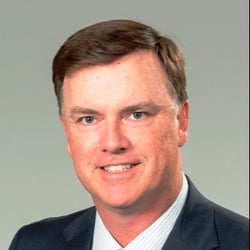

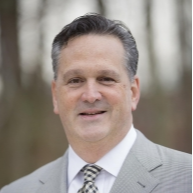

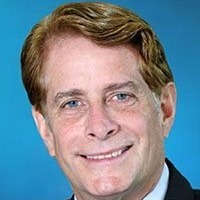

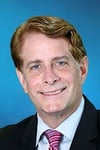 Robert C. Garrett is Co-CEO of Hackensack Meridian Health, which has four hospitals ranked among the top 10 in New Jersey according to U.S. News & World Report – including No. 1 ranked Hackensack University Medical Center - more than any other network in the state. Robert focused on aggressive expansion of the Hackensack University Network before its merger with Meridian Health. As Co-CEO, Robert concentrates on innovation and leading partnerships, including launching New Jersey’s first private medical school with Seton Hall University and a historic partnership with Memorial Sloan Kettering Cancer Center.
Robert C. Garrett is Co-CEO of Hackensack Meridian Health, which has four hospitals ranked among the top 10 in New Jersey according to U.S. News & World Report – including No. 1 ranked Hackensack University Medical Center - more than any other network in the state. Robert focused on aggressive expansion of the Hackensack University Network before its merger with Meridian Health. As Co-CEO, Robert concentrates on innovation and leading partnerships, including launching New Jersey’s first private medical school with Seton Hall University and a historic partnership with Memorial Sloan Kettering Cancer Center. John K. Lloyd is Co-CEO of Hackensack Meridian Health, one of the largest, most comprehensive health networks in New Jersey, which includes 13 hospitals, 28,000 team members, more than 6,000 physicians and over 140 patient care locations across the state. John has focused much of his career on developing a full continuum of care – long before national health care reform mandated such changes. As Co-CEO, John oversees all non-acute care hospital businesses, including population health and the foundations. John’s expertise and vision have helped the network meet and exceed the challenges of health care reform.
John K. Lloyd is Co-CEO of Hackensack Meridian Health, one of the largest, most comprehensive health networks in New Jersey, which includes 13 hospitals, 28,000 team members, more than 6,000 physicians and over 140 patient care locations across the state. John has focused much of his career on developing a full continuum of care – long before national health care reform mandated such changes. As Co-CEO, John oversees all non-acute care hospital businesses, including population health and the foundations. John’s expertise and vision have helped the network meet and exceed the challenges of health care reform. Patrick R. Young is president of Population Health for Hackensack Meridian Health, where he leads the Population Health division and is responsible for accelerating the development of strategic priorities related to health care reform; population health management; Meridian’s Medicare Shared Savings Accountable Care Organization; Hackensack Meridian Health Partners, Hackensack Meridian Health’s clinically integrated network; health insurance partnerships; as well as overseeing Managed Care.
Patrick R. Young is president of Population Health for Hackensack Meridian Health, where he leads the Population Health division and is responsible for accelerating the development of strategic priorities related to health care reform; population health management; Meridian’s Medicare Shared Savings Accountable Care Organization; Hackensack Meridian Health Partners, Hackensack Meridian Health’s clinically integrated network; health insurance partnerships; as well as overseeing Managed Care.


